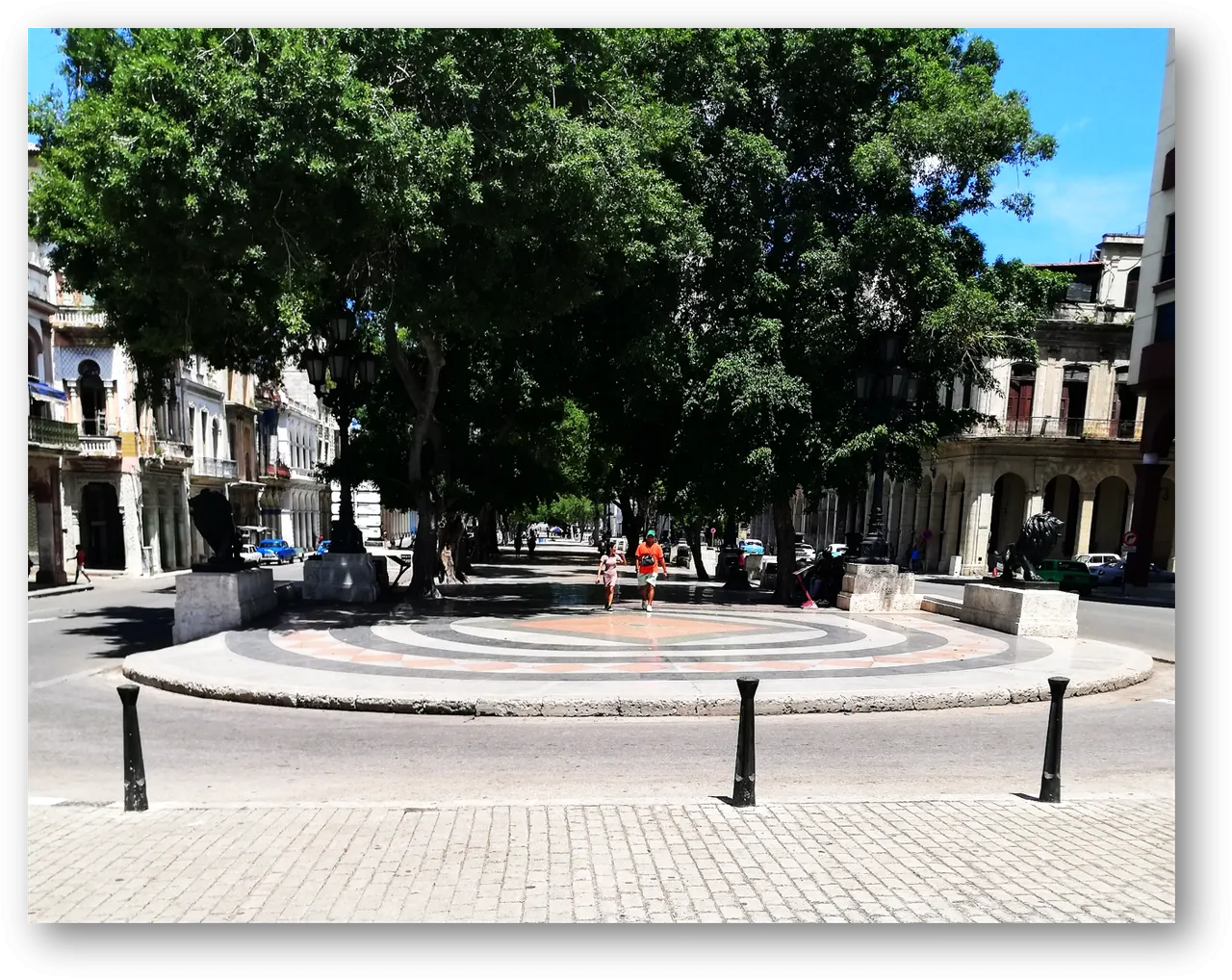
There is a promenade in Havana that is visited by everyone who comes to this capital. It is called Paseo Martí, but Cubans simply call it El Prado. For Havanans it is a place of rest and recreation, it is also a point of reference for many places because along the Prado are different important institutions. It is also one of the most beautiful and important walks in Havana.
Hay un paseo en La Habana que es visitado por todos los que vienen a esta capital. Se llama Paseo Martí, pero los cubanos lo llaman simplemente El Prado. Para los habaneros es un lugar de descanso y recreación, también es un punto de referencia para muchos lugares porque a lo largo del Prado se encuentran diferentes instituciones importantes. También es uno de los paseos más bellos e importantes de La Habana.
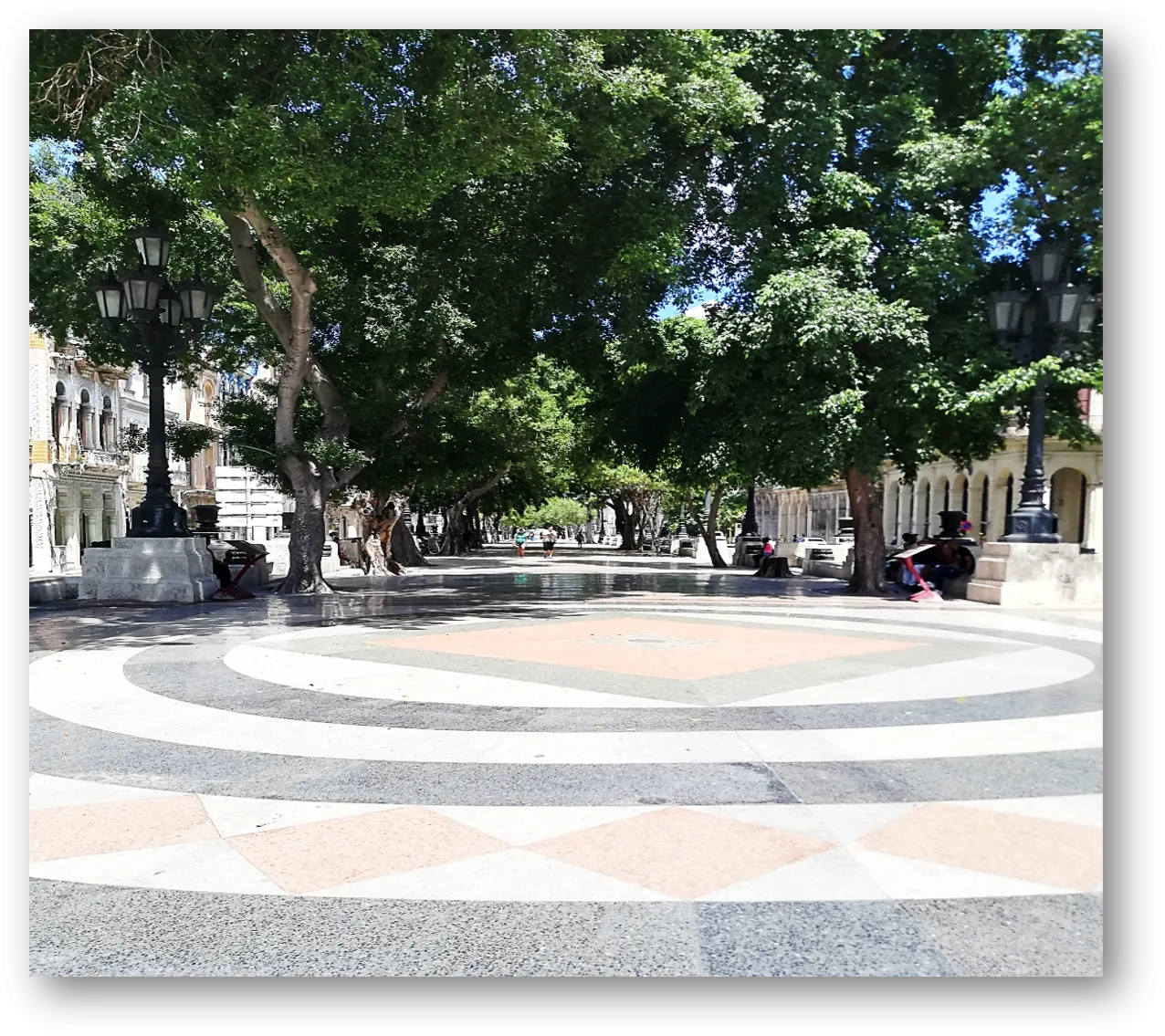
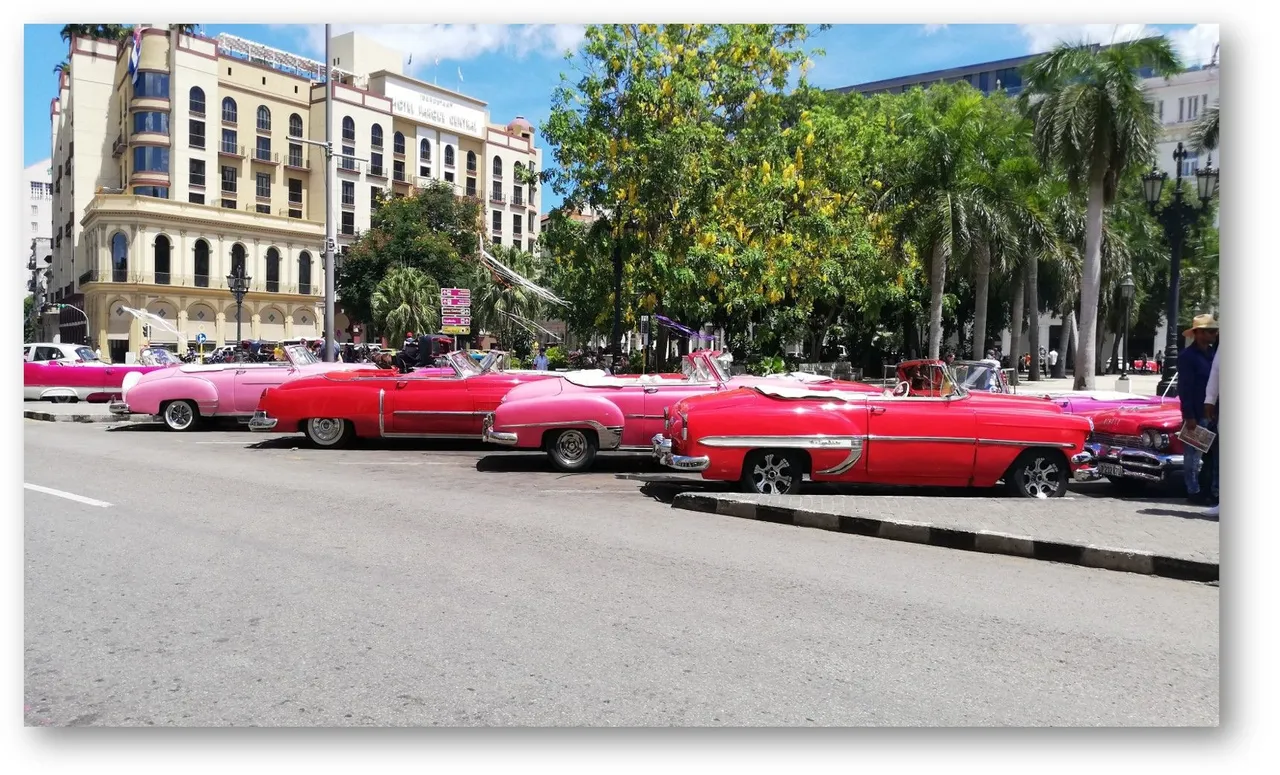
According to research I was able to learn that this promenade was created in 1772, in the eighteenth century, during the colonial era and over the years it has changed much in appearance and name. The remodeling that turned El Prado Havana into what it is today was done between 1928-1929, the architect in charge of its design was Jean-Claude Nicolas Forestier, a French landscape architect.
This wide avenue, one kilometer long, runs from the Malecon to Monte Street, crossing the entire downtown area, and was the first paved street in Havana. On this occasion I am only going to refer to the first half of the avenue, which is the one that Cubans recognize as the Prado because of the wide pedestrian walkway, with terrazzo floor, surrounded by trees, that goes from the Malecon to Neptuno Street. The rest of this avenue, which reaches Monte Street, is not a walkway, it is only used to park cars, although these are very attractive because most of them are old and colorful cars that are dedicated to provide tourist services, it has no architectural attraction.
Según las investigaciones realizadas pude saber que este paseo fue creado en 1772, en el siglo XVIII, durante la época colonial y a lo largo de los años ha cambiado mucho su aspecto y su nombre. La remodelación que convirtió a El Prado habanero en lo que es hoy se hizo entre 1928-1929, el arquitecto encargado de su diseño fue Jean-Claude Nicolas Forestier, un paisajista francés.
Esta amplia avenida, de un kilómetro de longitud, va desde el Malecón hasta la calle Monte, atravesando todo el centro de la ciudad, y fue la primera calle pavimentada de La Habana. En esta ocasión sólo me voy a referir a la primera mitad de la avenida, que es la que los cubanos reconocen como el Prado por el amplio paseo peatonal, con suelo de terrazo, rodeado de árboles, que va desde el Malecón hasta la calle Neptuno. El resto de esta avenida, que llega hasta la calle Monte, no es un paseo, solo se utiliza para aparcar coches, aunque estos son muy atractivos porque la mayoría son coches antiguos y coloridos que se dedican a prestar servicios turísticos, no tiene ningún atractivo arquitectónico.
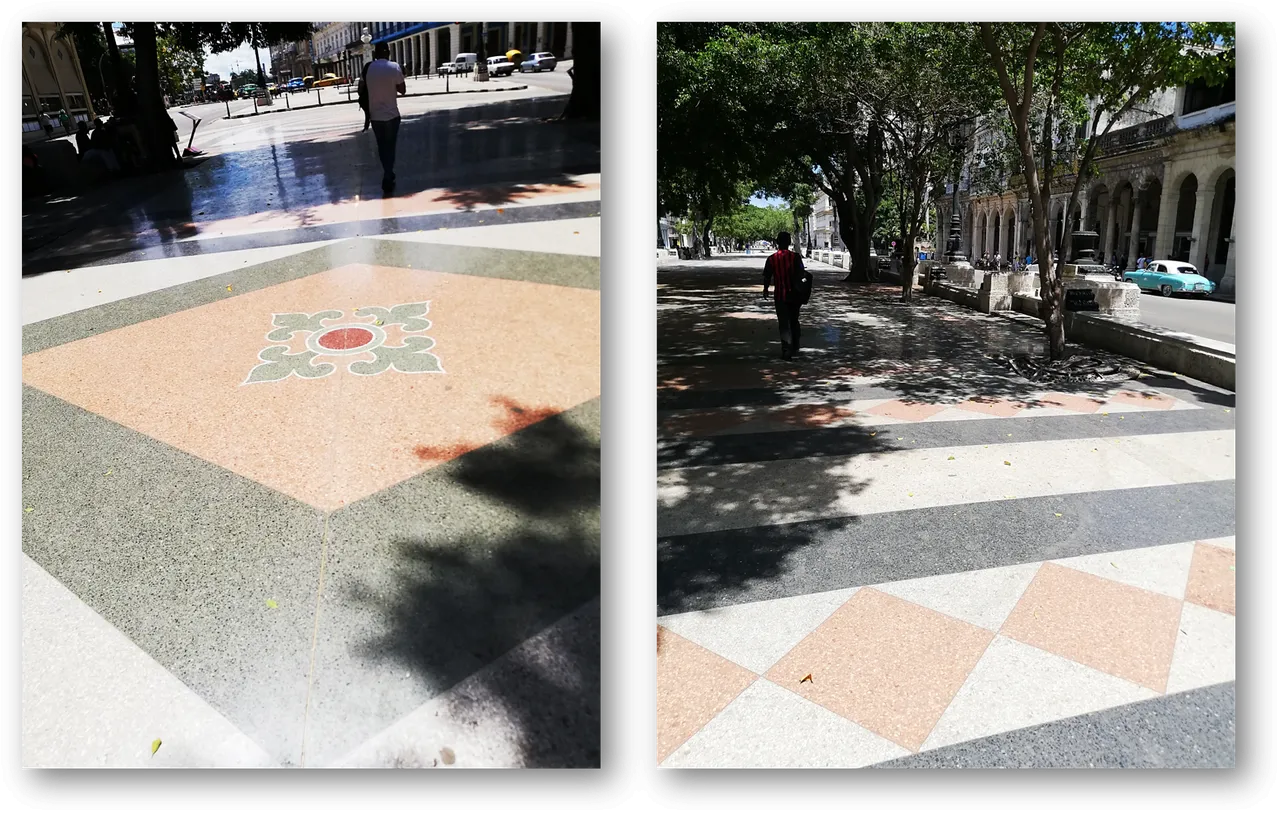
Walking along this great promenade you can see that it is very wide and has a polished terrazzo floor, with figures that adorn it in different colors, among which stand out red, white, yellow and black, which give it a very fine appearance.
Caminando por este gran paseo se puede ver que es muy amplio y tiene un suelo de terrazo pulido, con figuras que lo adornan de diferentes colores, entre los que destacan el rojo, el blanco , el amarillo y el negro, que le dan un aspecto muy fino.
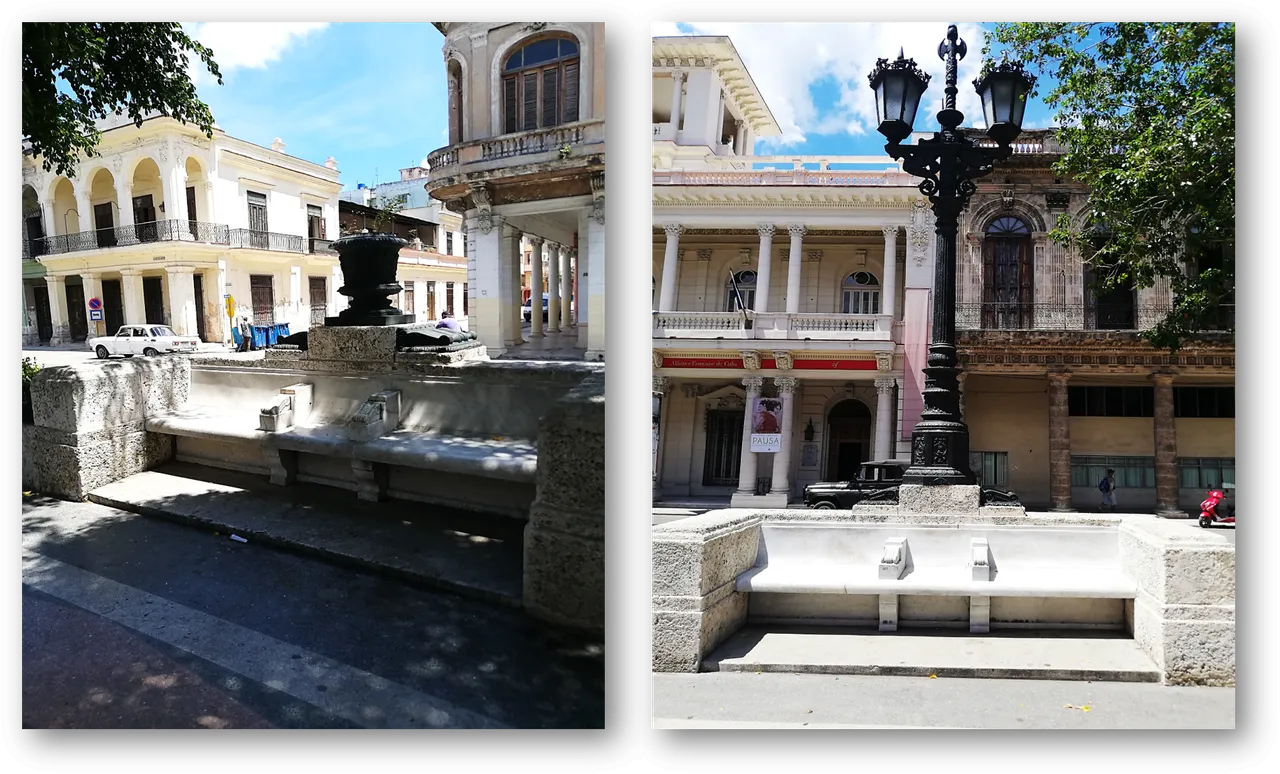

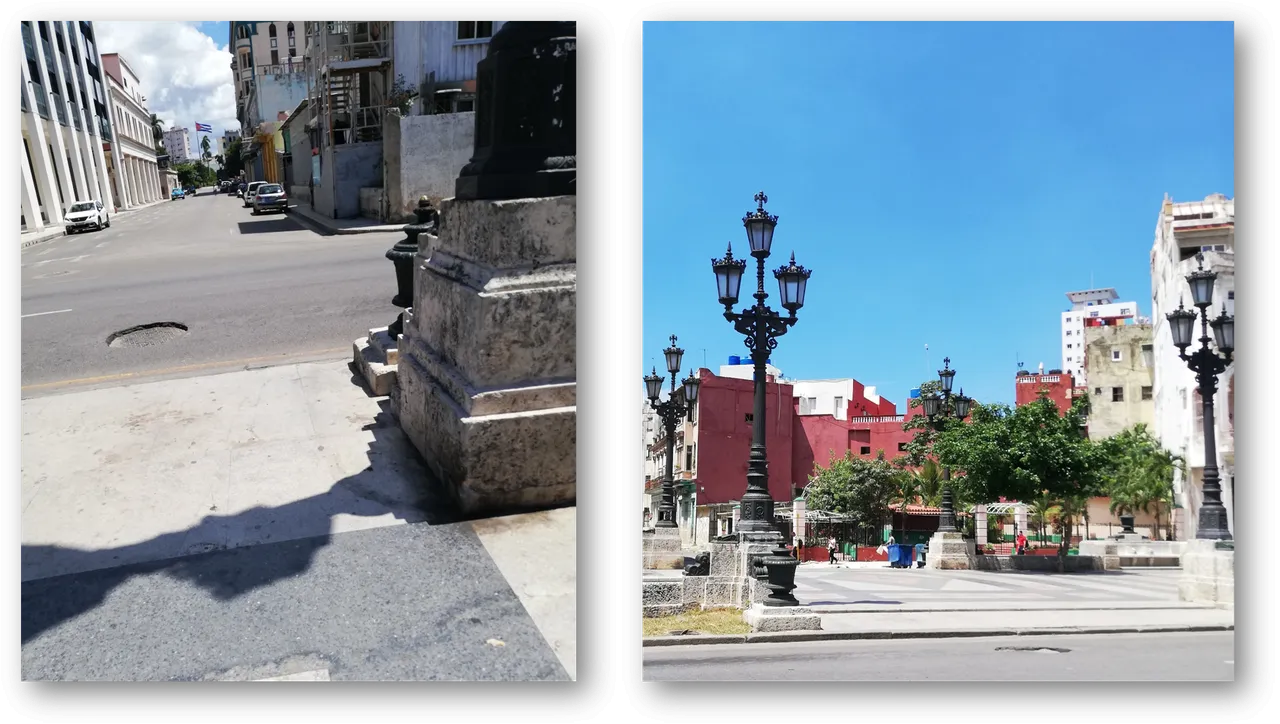
On each side of the wide promenade, there are large stone benches with backs, marble veneers and ornaments between them. At each end of the benches are bronze ornaments and on the tops of the backs are placed bronze vases which are used as flower pots and on the next bench are placed beautiful lanterns and so in that arrangement the whole of the Prado is bordered. In addition, at the corners of the streets there are always accesses with steps, for those who want to leave the promenade, decorated with bronze pieces and lanterns.
A cada lado del amplio paseo, hay grandes bancos de piedra con respaldos, enchapados de mármol y adornos entre ellos. En cada extremo de los bancos hay adornos de bronce y en la parte superior de los respaldos se colocan jarrones de bronce que sirven de macetas y en el banco siguiente se colocan hermosos faroles y así en esa disposición se bordea todo el Prado. Además, en las esquinas de las calles siempre hay accesos con escalones, para los que quieren salir del paseo, decorados con piezas de bronce y faroles.
.
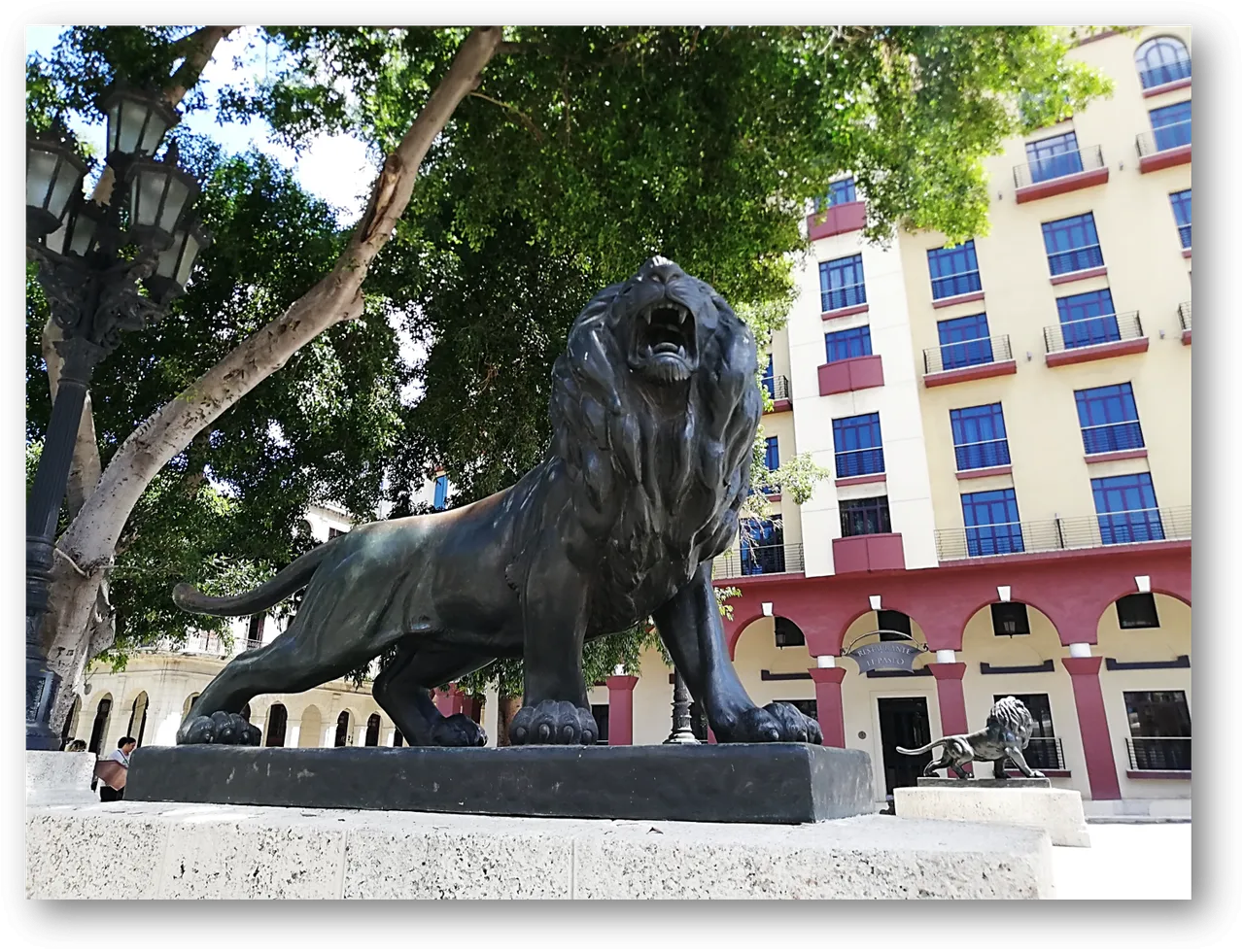

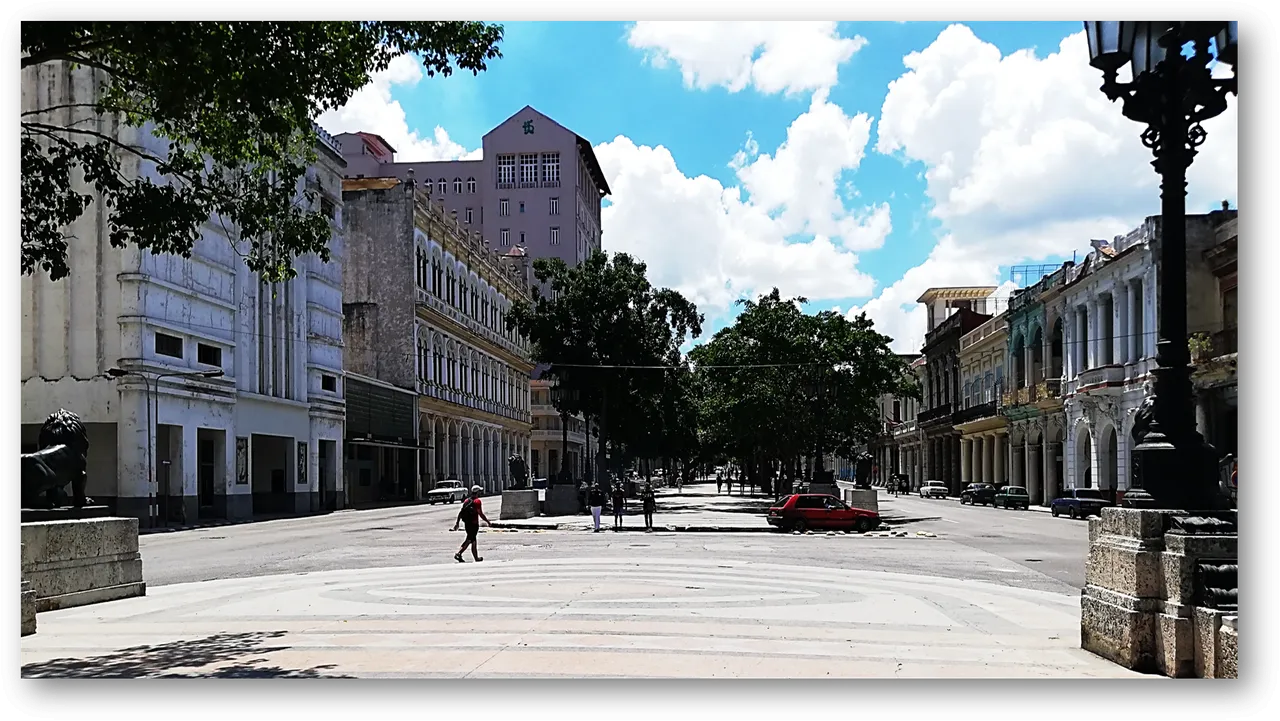
But the fundamental pieces that give great enhancement to this place are the eight lions sculpted in bronze, they are spectacular works that are very similar to the real ones. The sculptors were the French Jean Puiforcat and the Cuban Juan Comas, they made these beautiful works possible, there are two on both sides of the beginning and end of the promenade and in the only street crossing that the promenade has, on Colon Street there are four, two on each corner. This is what I like most about this promenade. Lions are one of the most beautiful and imposing animals in the animal kingdom and they never fail to show it through these sculptures. Everyone who comes to the Prado directs his gaze to the corners where these lions are, they are part of the identity of the city.
Pero las piezas fundamentales que dan gran realce a este lugar son los ocho leones esculpidos en bronce, son obras espectaculares que se asemejan mucho a los reales. Los escultores fueron el francés Jean Puiforcat y el cubano Juan Comas, ellos hicieron posible estas hermosas obras, hay dos a ambos lados del inicio y final del paseo y en el único cruce de calles que tiene el paseo, en la calle Colón hay cuatro, dos en cada esquina. Esto es lo que más me gusta de este paseo. Los leones son uno de los animales más bellos e imponentes del reino animal y no dejan de demostrarlo a través de estas esculturas. Todo el que viene al Prado dirige su mirada a las esquinas donde están estos leones, son parte de la identidad de la ciudad.
.
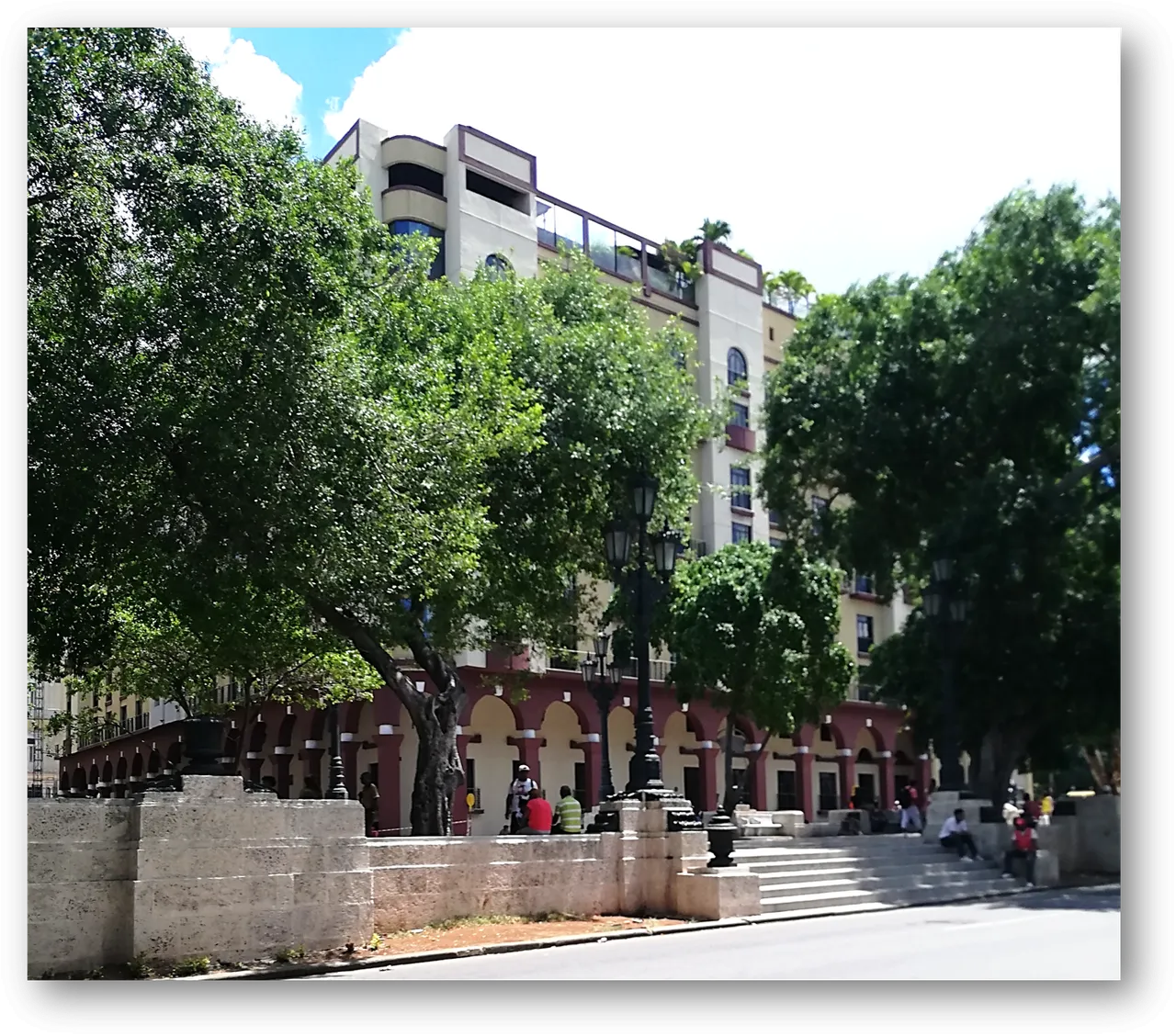
If we walk along this promenade we can observe the great shade offered by its tall and leafy trees, something unusual in the streets of Havana. Whoever walks along it when the afternoon falls can feel the uproar of the birds, as if all the birds of the city were concentrated in these trees and claiming their territory.
Si caminamos por este paseo podemos observar la gran sombra que ofrecen sus altos y frondosos árboles, algo inusual en las calles de La Habana. Quien lo recorre cuando cae la tarde puede sentir el alboroto de los pájaros, como si todas las aves de la ciudad se concentraran en estos árboles y reclamaran su territorio.
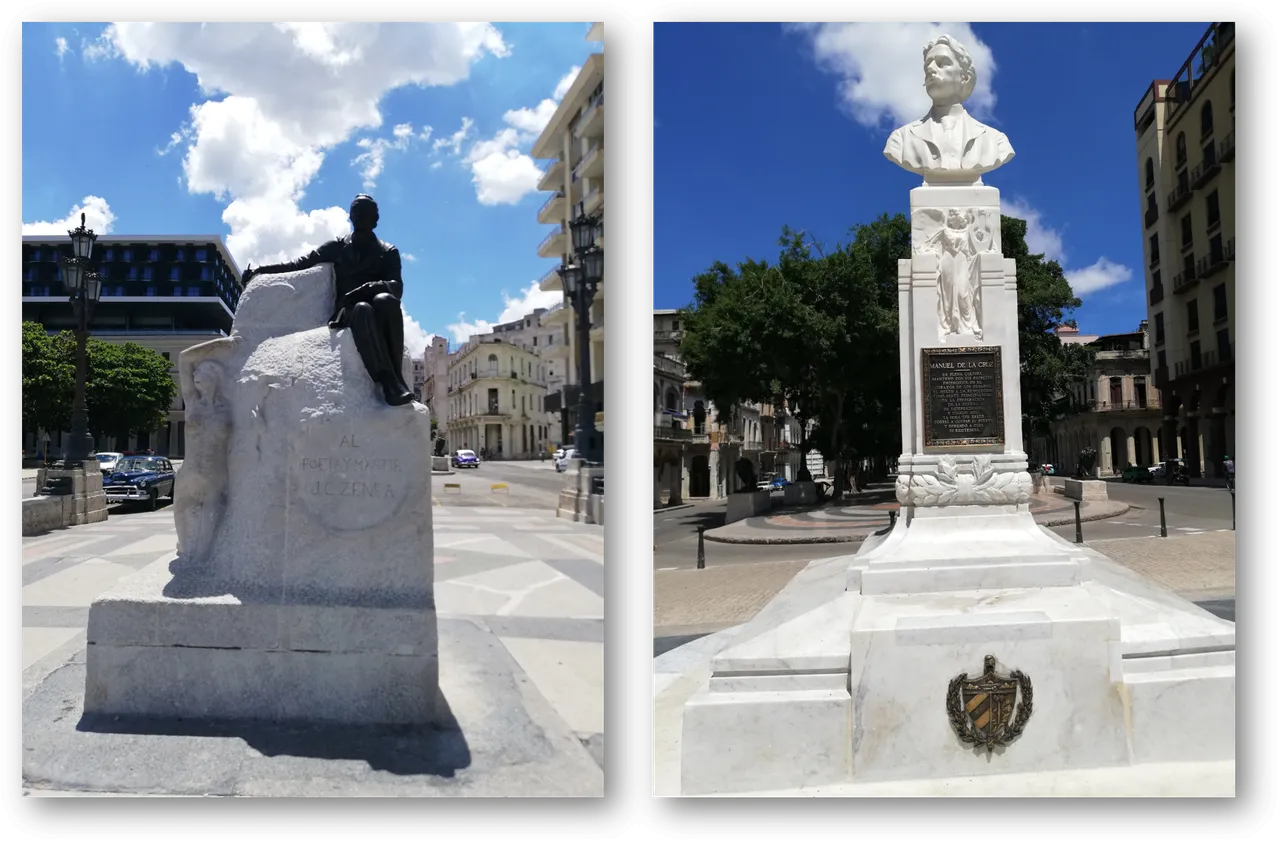
In the center of the beginning and end of the promenade there are sculptures of two writers recognized in the literature of Cuba. At the beginning near the boardwalk is the sculpture of the writer Juan Clemente Zenea, the sculpture of the writer is made of bronze and is sitting on a marble rock, where next to the rock and also in marble is the figure of a woman, the one at the end of the walk, on Neptuno Street, is a bust of the writer Manuel de la Cruz, completely in marble on a large marble base also with a tombstone and the National Shield, both writers were part of the Cuban independence struggle.
En el centro del inicio y final del paseo hay unas esculturas, de dos escritores reconocidos en la literatura de Cuba. Al principio cerca del malecón está la escultura del escritor Juan Clemente Zenea, la escultura del escritor es de bronce y está sentado sobre una roca de mármol, donde al lado de la roca y también en mármol está la figura de una mujer, la del final del paseo, en la calle Neptuno, es un busto del escritor Manuel de la Cruz, completamente en mármol sobre una gran base de mármol también con una lápida y el Escudo Nacional, ambos escritores fueron parte de la lucha independentista cubana.
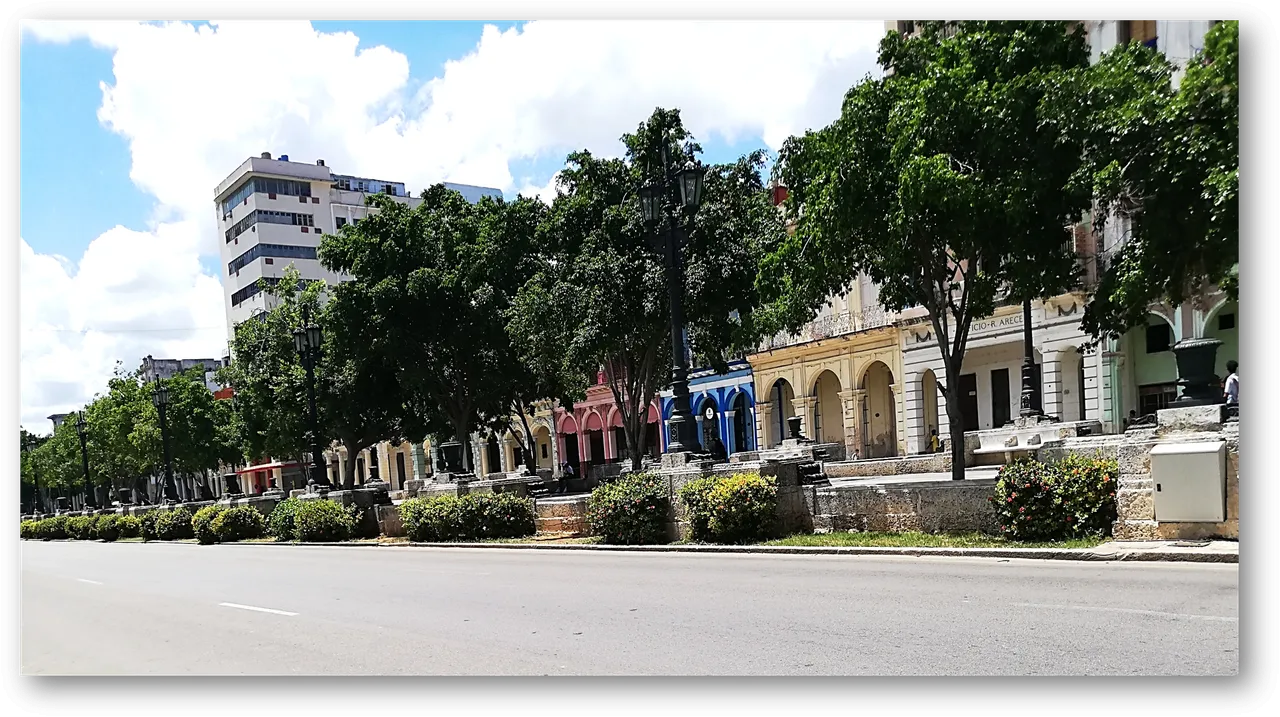

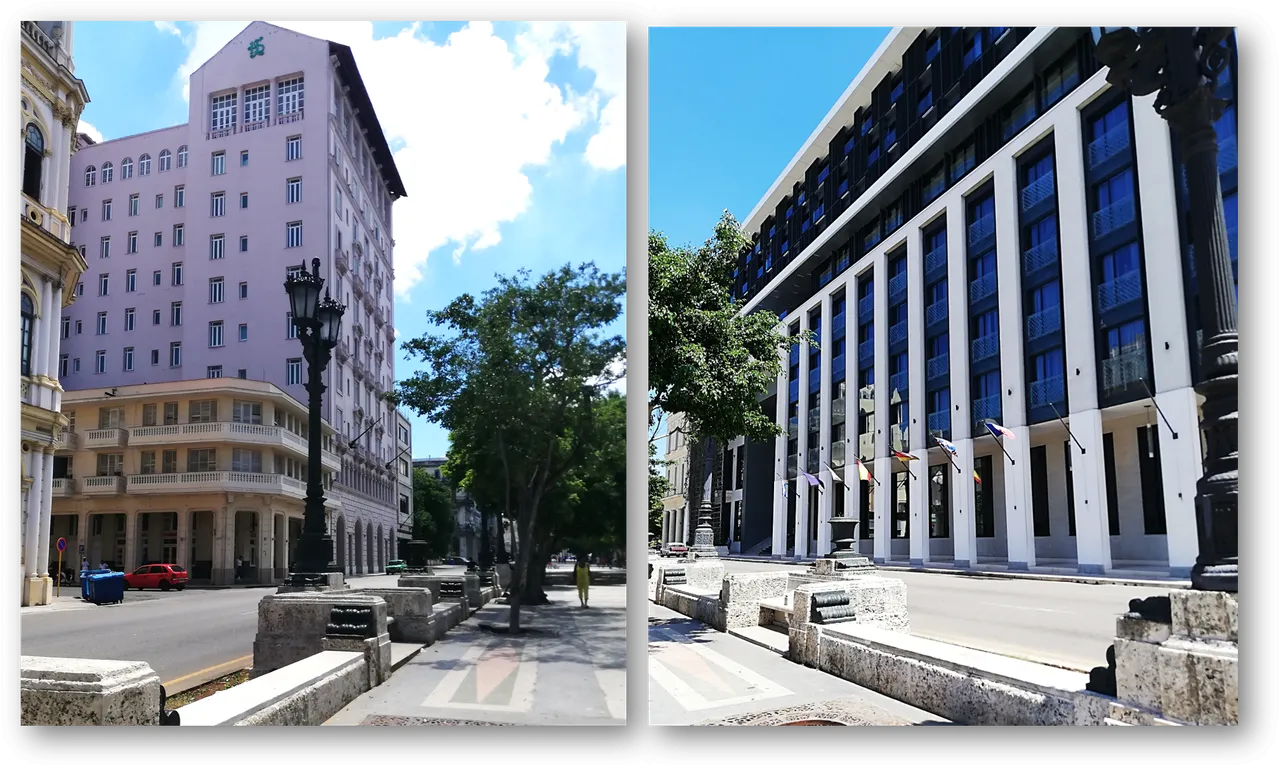
Outside the promenade there are small flowering shrubs that add beauty to the place. In addition, the architectural environment of the park is very varied, there are from colonial buildings such as the Palacio de los Matrimonios of great architectural beauty with a beautiful baroque style, the Hotel Sevilla with its row of columns, to more modern buildings such as the "Packard" Hotels and the "Paseo del Prado" to which it owes its name.
En el exterior del paseo hay pequeños arbustos en flor que aportan belleza al lugar. Además, el entorno arquitectónico del parque es muy variado, hay desde edificios coloniales como el Palacio de los Matrimonios de gran belleza arquitectónica con un bello estilo barroco, el Hotel Sevilla con su hilera de columnas, hasta edificios más modernos como los Hoteles "Packard" y el "Paseo del Prado" al que debe su nombre.
Well friends I hope you have enjoyed with me this beautiful and interesting walk, although I must point out that this beautiful walk, which serves as a rest from the sunny streets of Havana, should be repopulated with plants because in the part closest to the sea the trees are a little scarce, if it is not taken care of, it will lose one of its charms. I wish you a good day, see you soon.
Bueno amigos espero que hayan disfrutado conmigo de este hermoso e interesante paseo, aunque debo señalar que este hermoso paseo, que sirve de descanso de las soleadas calles de La Habana, debería ser repoblado con plantas porque en la parte más cercana al mar los árboles son un poco escasos, si no se cuida, perderá uno de sus encantos. Les deseo que tengan un buen día, hasta pronto.

The photos were taken with my Huawei P20 lite phone, stitched with Powerpoint.
use Translator DeepL
Las fotos fueron tomadas con mi teléfono Huawei P20 lite, unidas con Powerpoint
utilice Traductor DeepL
Pages consulted for precise data and dates / Páginas consultadas para obtener datos y fechas precisas